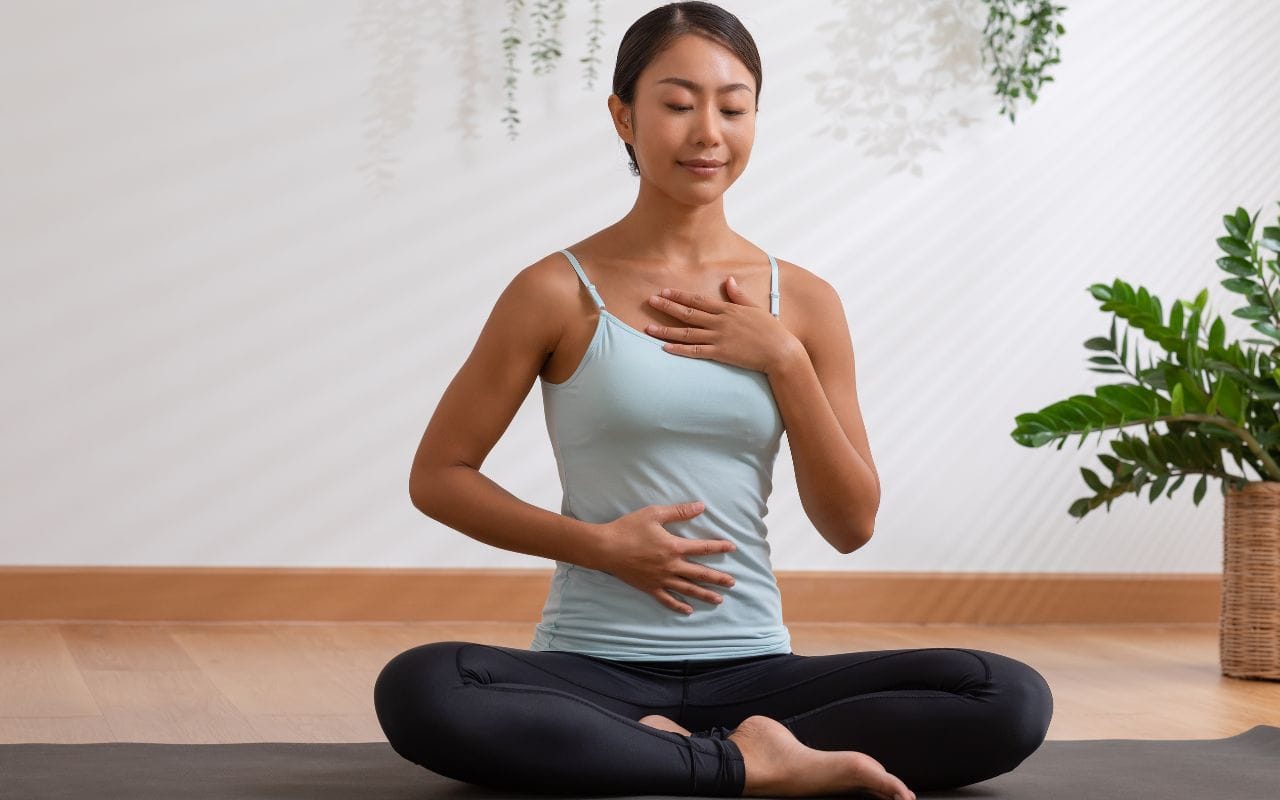
Yoga and the breath
The importance of learning to breathe - yoga and the breath. By Evi Dimitriadou
Breath should not only be an unconscious act. It can be a force, a medicine and a mechanism to gain inner power, to preserve and establish physical or mental health, longevity and even reach higher levels of consciousness. The lung capacity seems to be the greatest indicator of life span in combination with diet, the amount of physical activity and genetics.
But breathing is more than the movement of the diaphragm and sucking in air to feed cells and remove waste. Breathing affects the nervous system, the sympathetic and the parasympathetic branch of the nervous system. The deeper and more softly we breathe in and the longer we exhale, the more slowly the heart beats and the calmer we become. One reason for this is that the lungs and mostly the lower lobes are covered by nerves such as the vagus nerve of the parasympathetic system, responsible for relaxation and restoration.
But how do we breathe?
90% of the people are breathing incorrectly, causing or aggravating a list of various chronic diseases. 50% of today’s population are breathing through the mouth and 40% suffer from chronic nasal obstruction which decreases the airflow. Three-quarters of humans have a deviated septum, making the nose slightly off-centre, often resulting in making one airway permanently more congested than the other.
Many people also hold their breath, restricting/tightening the muscles or even organs, depriving the flow of blood and oxygen to this location. This can happen even by becoming tense with small things such as sending an email!
Our lungs lose about 12% capacity from the age of 30 to 50 and will continue declining even faster as we get older, with women losing more than men. As a result, we are breathing faster and harder and this breathing habit leads to chronic conditions such as high blood pressure, immune disorders and anxiety.

Reasons to breath through the nostrils
The air which enters the lungs is different when it comes from the nostrils, as is the distilled water different from a frog pond. The breath gets slower when we breathe through a smaller airway, in this case, the nostrils compared to the mouth. Another benefit of breathing through the nostrils is the huge boost of nitric oxide, a molecule that plays an essential role in increasing circulation and oxygen consumption into cells. Immune function, weight, mood, blood circulation and even sexual function are influenced a lot by the amount of nitric oxide in the body.
A very quiet common side effect of breathing through the mouth is sleep apnea which is the stopping of the breath for a few seconds per minute, depriving the brain of oxygen. The brain needs at least 20% of our oxygen intake. This deprivation may seriously affect mood and memory, the overall brain function causing ADHD, dementia as well as insomnia, high blood pressure, diabetes, immunosuppression etc. By breathing through the nose, we absorb 18% more oxygen in comparison to breathing through the mouth.
The importance of learning to breathe
Emotional states are expressed in breathing patterns and subsequently voluntary changes of the breathing patterns can alter emotional states and influence well-being. In fact, a typical autonomic reaction to stressful events is rapid thoracic breathing which in turn lead to hyperventilation (excessively rapid breathing), altered tidal volume (lesser amounts of air moving in and out of the lungs) and hypocapnia (decrease in alveoral and blood carbon levels below the normal range).
Paced breathing is not only crucial for lung capacity but also for relaxing the body and calming the mind. Slow and rhythmic breathing promotes activation of the parasympathetic nervous system, which in turn facilitates stress reduction. More specifically, slowing the breath rate to about 6 breaths per minute with equal inhalations and exhalations is found to reduce oxidative stress (an imbalance between the production of oxygen and the antioxidant defences). Slow and rhythmic breathing also increases the release of prolactin and oxytocin, the hormones that promote feelings of calmness and social bonding. Lastly, breath practices that involve the contraction of the laryngeal muscles to create an increase of airway resistance – such as ujjayi – seem to stimulate somatosensory vagal afferents to the brain and consequently promote improved autonomic function.
Moderate exercise like walking and cycling has been shown to increase lung capacity up to 15%.
Yoga, not only with the mild movements and with stretching, but mostly with the breathing practices and the breathing ratios, focus on nose breathing and slowing down the breathing pace by deepening the breath. Yoga, with its focus on the breath, seems to be the ultimate practice for enhancing the breathing capacity.
One of the reasons for practicing breath awareness and conscious breath regulation is to promote the use of supportive breathing patterns in everyday life situations. The breath can also help in directing attention to specific body parts while holding a posture or performing a movement and to consequently increase interoceptive and proprioceptive awareness. Moreover, when offered within a context of safety, the breath can be used to turn toward and focus on unpleasant and stressful sensations that arise in the physical practice and to breathe into them rather than avoid them or fight them.
Yoga Therapy, with a personal breathing assessment, shows the breathing pattern of each individual and gives a huge opportunity to alter a dysfunctional tendency with the optimal way of breathing based on symptoms and structure. Through yoga breathing practices we strengthen the diaphragm elasticity in order for deep and easy breathing to take place habitually and to become unconscious.




